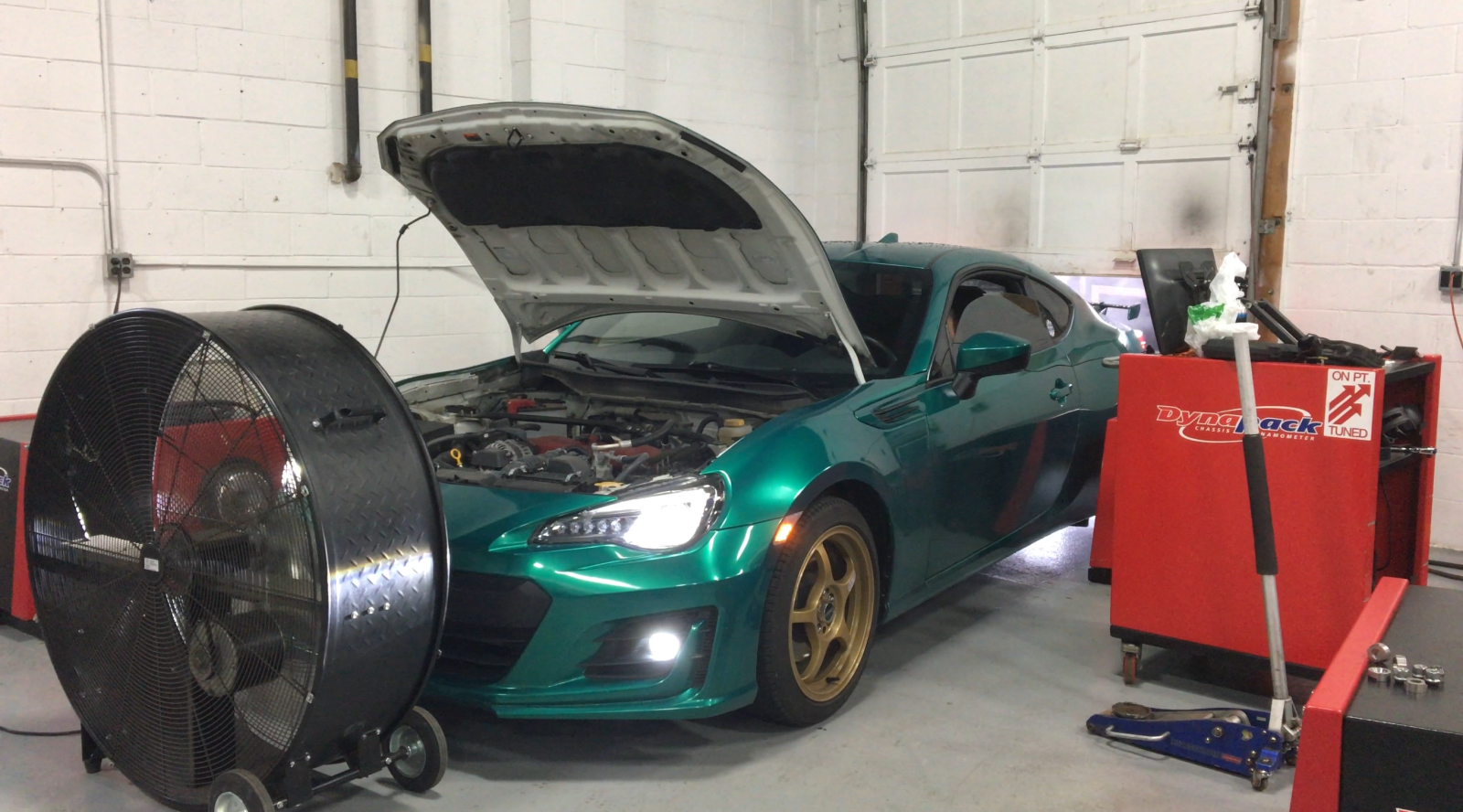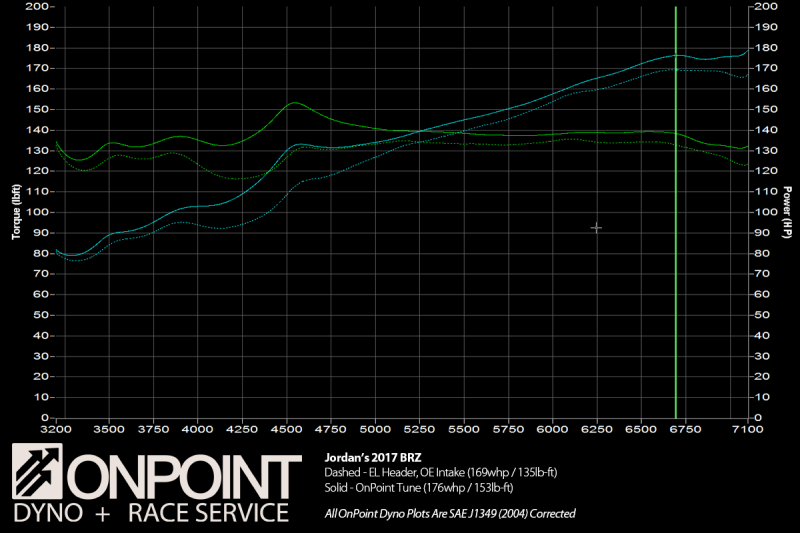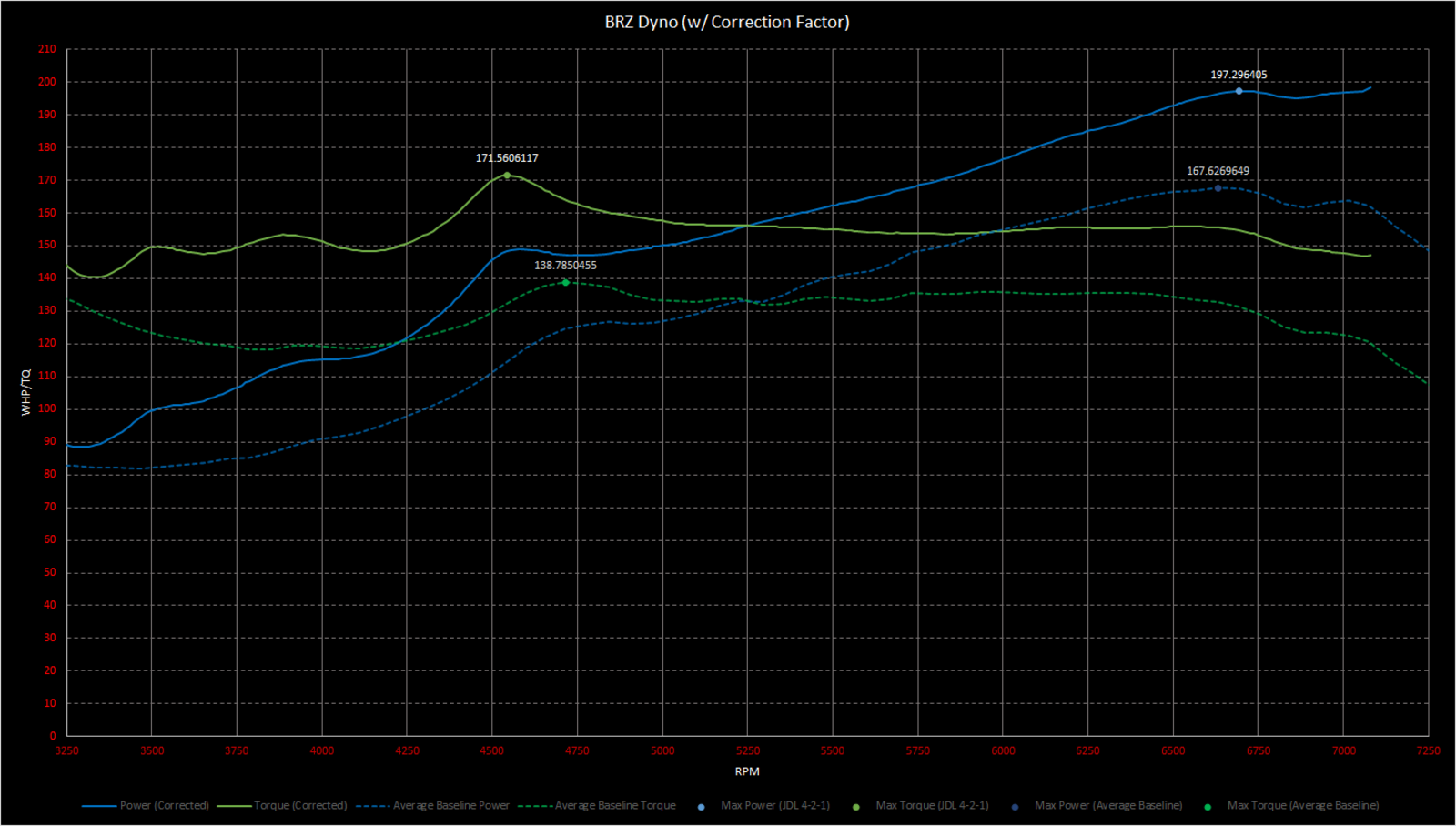
I have seen constant posts in Facebook groups that I’m a part of for the FRS/BRZ/86 platform that go something like this: “What are your mods and WHP numbers?”
What ensues is a complete shit-show of a dick measuring contest. I’m tired of seeing it over and over, so here is a long-winded post about why this bench-racing effort is mostly futile, and what the most viable solutions are to this issue. I’m sure this same thing happens within every circle of car enthusiasts.
The most important factor: every dyno reads differently.
A bunch of us in these groups/clubs have had our cars on the dyno with a variety of different modifications. But, there is no one “reference” dyno that everyone uses. We have all used a variety of different tuners who use different types of dynos (Dynojet, Dynapack, DynoDynamics, Mustang, etc.) that all bring their own ways of reading wheel power, and with that, have different correction factors. Even two dynos of the same exact model won’t read exactly the same. Calibration and correction factors once again can swing numbers around.
In summary: The tape measure you use matters just as much as what your packin’ if your talking strictly numbers.
Just asking for numbers from people is irrelevant w/o knowing what the baseline of a stock car is on the same dyno they ran their vehicle on - ideally the same car before/after mods and tune, on the same day.
With the baseline, you can get the truly important metric when measuring engine modifications - percentage gain, as well as the increase in area under the curve.
Here’s an example with my “Stage 2+” (I think) 2017 BRZ. My mods are as follows:
- JDL 4-2-1 EL Header
- Stock Air Intake with a new OEM Paper Air Filter
- Stock Over Pipe
- Stock Front Pipe
- Invidia R400 Catback
- Custom Dyno Tune from OnPoint Dyno
My car was tuned by Sasha with OnPoint Dyno. For reference, stock BRZ/FRSes make anywhere from 140-150ish whp on this dyno. How can I prove this? Check the link and come back and keep reading below:
This basically stock FRS in the link above dyno’d at 155whp with the stock tune, an axle back exhaust and a Grimspeed Intake, which is the only aftermarket intake that actually produces reasonable gains on the factory tune (anywhere from 6 to 10whp depending on the dyno). From talking to Sasha as well as conservatively looking at the gains from the Grimmspeed dyno, you could estimate a completely stock FRS/BRZ/86 to pull around 150whp and 131wtq.

My car made 176whp and 153wtq on the same dyno. Note that the baseline on my graph is not accurate as the car already had the mods installed on the vehicle.
Therefore, high level, the approximate percentage peak gains are about:
- +17.3% WHP
- +16.8% WTQ
And these are just the peak gains, not including the significant area under the curve increase (especially around the torque dip).
Now, when scouring through the ft86club forums, generally, it looks like Drift Office’s DynoJet is representative of an average baseline for most places, with stock FRS/BRZ/86‘s putting down around 167whp.
That baseline number is an +11.5% difference compared to OnPoint’s baseline dyno.
With this information, I decided to do some maths. Take that “forum average” baseline, and then apply a correction factor to my OnPoint numbers. The correction factor would be the 11.5% difference between the two dyno’s baseline numbers.

See how my car is at almost 200whp now? The percentage gains didn’t change at all from baseline to Stage 2+! Only the baseline number has increased.
Now is this method perfect? Of course not. Even compensating for “correction factor”, this is still a theoretical value given that the baseline cars were two different stock cars, where there can be variance between them.
So now, what’s the best method of comparison then? If you want to look at numbers, Dyno Days are usually the closest you can get when comparing cars side by side. This means that any car that wants to participate will be running on the exact same dyno, under the exact same conditions, on the exact same day. That way, the most important variance in comparing cars and their mods/tunes (the Dyno) has now been removed.
In having a few stock vehicles as well as a whole host of cars with different modifications and tuning methods - this should provide the most objective base of comparison that we can hope for.
But above all else, if you’re shopping for parts and trying to compare the increase in performance, look at the percentage gains - not just raw numbers.